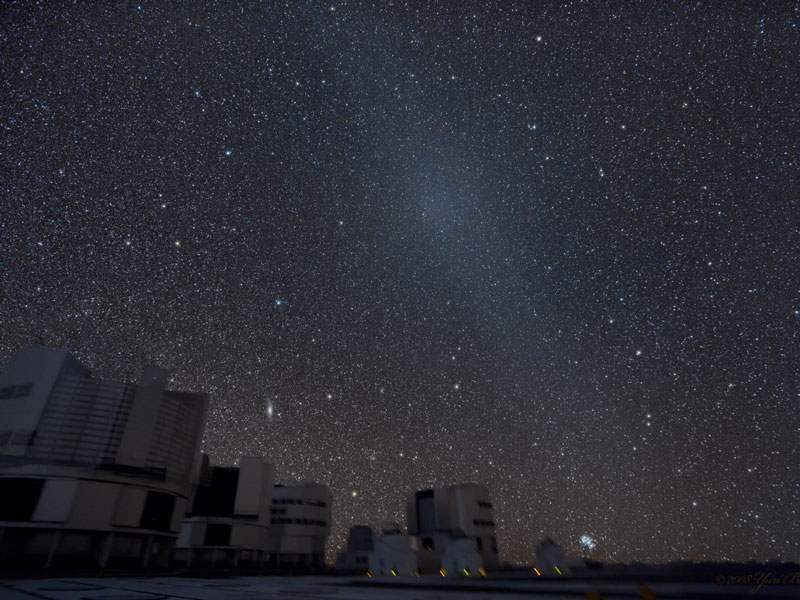
|
Credit & Copyright: Yuri Beletsky
(ESO)
Explanation:
Is the night sky darkest in the direction opposite the Sun?
No. In fact, a rarely discernable faint glow known as
the gegenschein (German for "counter glow") can be seen 180
degrees around from the Sun in an extremely dark sky.
The gegenschein is sunlight back-scattered off small interplanetary
dust particles.
These dust particles are millimeter sized splinters from
asteroids and orbit in the
ecliptic plane of the planets.
Pictured
above from last October is one of the most spectacular pictures of
the gegenschein yet taken.
Here a deep exposure of an extremely dark sky over
Paranal Observatory in
Chile shows
the gegenschein so clearly that even a surrounding glow is visible.
In the foreground are several of the
European Southern Observatory's
Very Large Telescopes,
while notable background objects include the
Andromeda galaxy toward the lower left and the
Pleiades star cluster just above the horizon.
The gegenschein
is distinguished from zodiacal light near the Sun by
the
high angle of reflection.
During the day, a phenomenon similar to
the
gegenschein called the glory can
be seen in reflecting air or clouds opposite the Sun from an airplane.
digg_url = 'http://apod.nasa.gov/apod/ap080507.html'; digg_skin = 'compact';
|
January February March April May June July August September October November December |
| ||||||||||||||||||||||||||||||||||||||||||||||||
NASA Web Site Statements, Warnings, and Disclaimers
NASA Official: Jay Norris. Specific rights apply.
A service of: LHEA at NASA / GSFC
& Michigan Tech. U.
Based on Astronomy Picture
Of the Day
